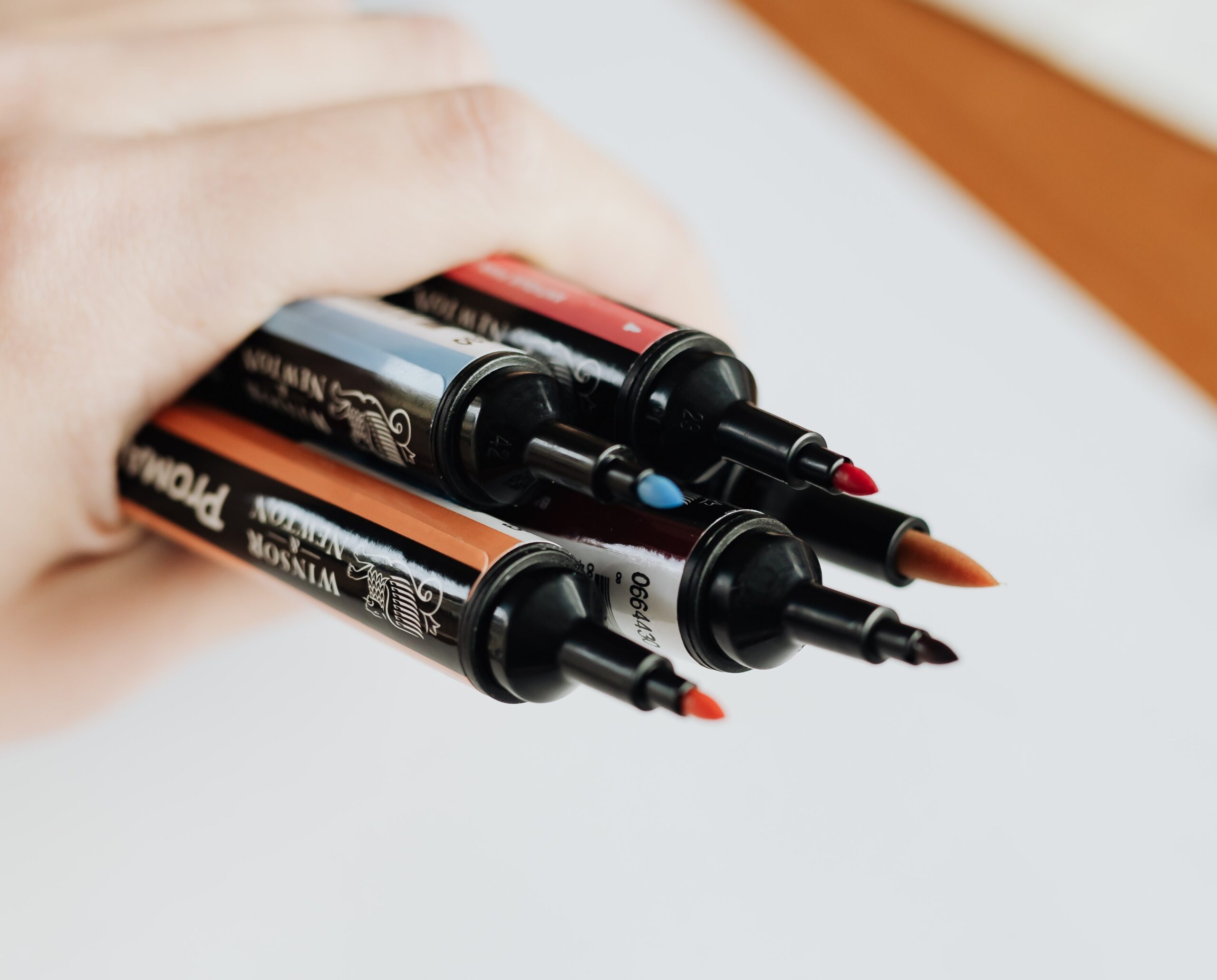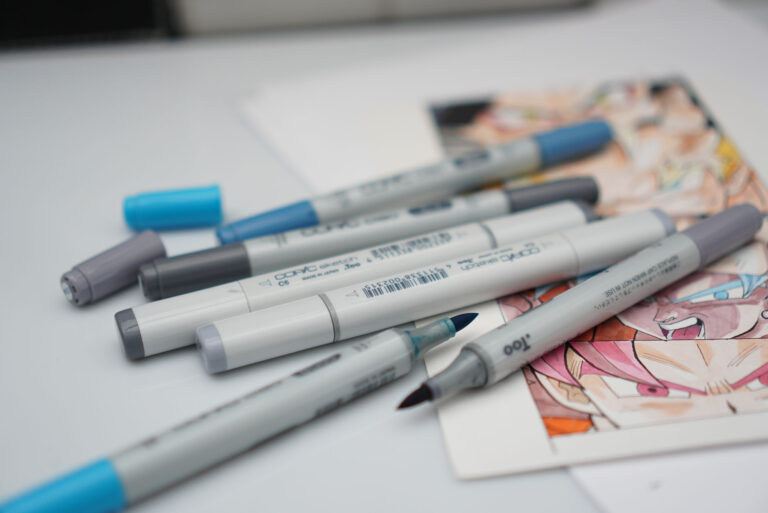This post contains affiliate links. When you purchase through links on our site, we may earn an affiliate commission. Learn more about it here.
In this blog post, I’m going to talk about 5 different types of art markers. There are so many different types of markers for drawing.
You’ve probably seen so videos online where artists use all kinds of markers to draw and paint like Posca markers, Copic Markers, Ohuhu markers, you name it. But are they all the same?
There is no universal type of marker since each type of marker is designed to do certain things. So each one of them is very good at what it’s designed to do, but bad at everything else.
Like for an example, you can’t use alcohol marker if you want to draw on a black paper, or you can’t use India ink marker to get that beautiful aquarelle effect. They are made for different applications and purposes.
So depending on your style or what you’re intended to do, you want to get the correct type of marker that does the job the best. So what type of markers are there?
Table of Contents
1. Felt-tip pen
Felt-tip or fibre-tip pens are water-based coloring markers usually made for children. They come in various sizes and shapes.
There are standard ones and there are also jumbo-sized markers for smaller children. You can even find felt-tip pens with ink that can change colors!
As interesting as that sounds, felt-tip pens may not be suitable for coloring your artwork. Since the inks are water-based, they might fade out in a short amount of time.
The inks usually need to fulfill even stricter regulations than inks of artist markers, since the users are mostly children. Although they are safe for children, the colors that you can find in these markers are usually dull and less vibrant.
Well in a way, that’s totally understandable since the manufacturers can’t go crazy with their formula and have to work only with ingredients that are child-safe.
But if you’re really looking for something budget-friendly, felt-tip pens for children like the ones from Crayola or Staedtler might just be the one for you.
2. Alcohol marker
Alcohol markers have been gaining popularity over the years. You’ve probably heard about Copic or Ohuhu markers. These are markers with alcohol-based ink.
They are the best at blending colors, but since they’re not opaque, you can’t use them on a black or a dark paper, or any dark substrate for that matter.
They also dry super fast, so it’s perfect for artists who wants to get the job done quickly. Alcohol inks are also permanent inks so they are water resistant when dried.
If you want to learn more about alcohol markers, you can read it here.
The complete set of 180 colors Copic Ciao Markers (72 A & 72B & 36E)
3. Watercolor marker
Watercolor markers are super fun to use, especially you have that option to use them as they are or apply water to get that aquarelle effect. It’s almost like having watercolor, but in a pen form.
Watercolors are generally not opaque, so like alcohol makers, they don’t do well on a dark surface. In a paste form, like those watercolors in tubes, you might be able to paint on a dark substrate if you apply several layers (there’s usually fillers in the paste that make this possible).
You can’t do that with watercolor markers though.
4. India ink marker
India ink markers use India inks which are highly pigmented. They are water resistant and lightfast, which means that the color of the inks would not change if it’s exposed to light for a long time.
Lightfastness could be an important aspect to take into consideration especially if you want to display your artwork on the wall.
It’s also an important to use lightfast markers if you want to sell your artwork. You don’t want your artwork to fade over time, you want your artwork to stay vibrant for as long as possible.
One thing about India ink markers is that they do poorly at blending. You would never get that gradient effect that you would get with alcohol markers.
To blend two colors together, what you could do is it to smudge both colors together with your finger before the inks dry. That way you could still get a relatively smooth transition, but you need to work fast.
What you need to watch out for is, how you store them. They need to be stored flat. Never store them upright! The India inks contain tiny pigments, and these pigments give color to the inks.
So imagine where these tiny little particles go when you store them upright?
They will start to move downward and over time, these pigments will gather at the bottom of the reservoir where the other end of the nib is sticked into, clogging it eventually. You would then end up with a marker that doesn’t write, even though there’s so much ink left!
The darker colors of India inks are usually opaque and the lighter the colors are, the less opaque or more transparent they become.
5. Acrylic marker
2020s is the year of Posca markers! And yes, Posca markers are water-based acrylic markers. They are the newest trend, and a huge trend at that! Posca markers drawing videos can reach millions and millions of views on social platforms. But are they that good?
The best thing about acrylic markers in general is that inks are opaque. Which means that you can use acrylic marker on literally any type of surface. The possibilities on what you can do with them are endless!
As good as that sounds, acrylic marker inks don’t blend really well, and they don’t dry that fast.
So if you’re working on a project with different layers and colors, you might need to wait until one layer dries to be able to move on to the next one. Some artists even use hair driers to speed up the process.
One more thing to note is that Posca markers has a very different system compared to e.g., alcohol or watercolor markers.
An alcohol marker for an example, has a reservoir inside it which is saturated with ink. So the ink is contained in the reservoir. The nib then draws the ink from the reservoir.
A Posca marker however, has no reservoir. The ink flows freely inside the body of the marker. After activation (by pumping), the nib can draw the free-flowing ink inside the body directly.









